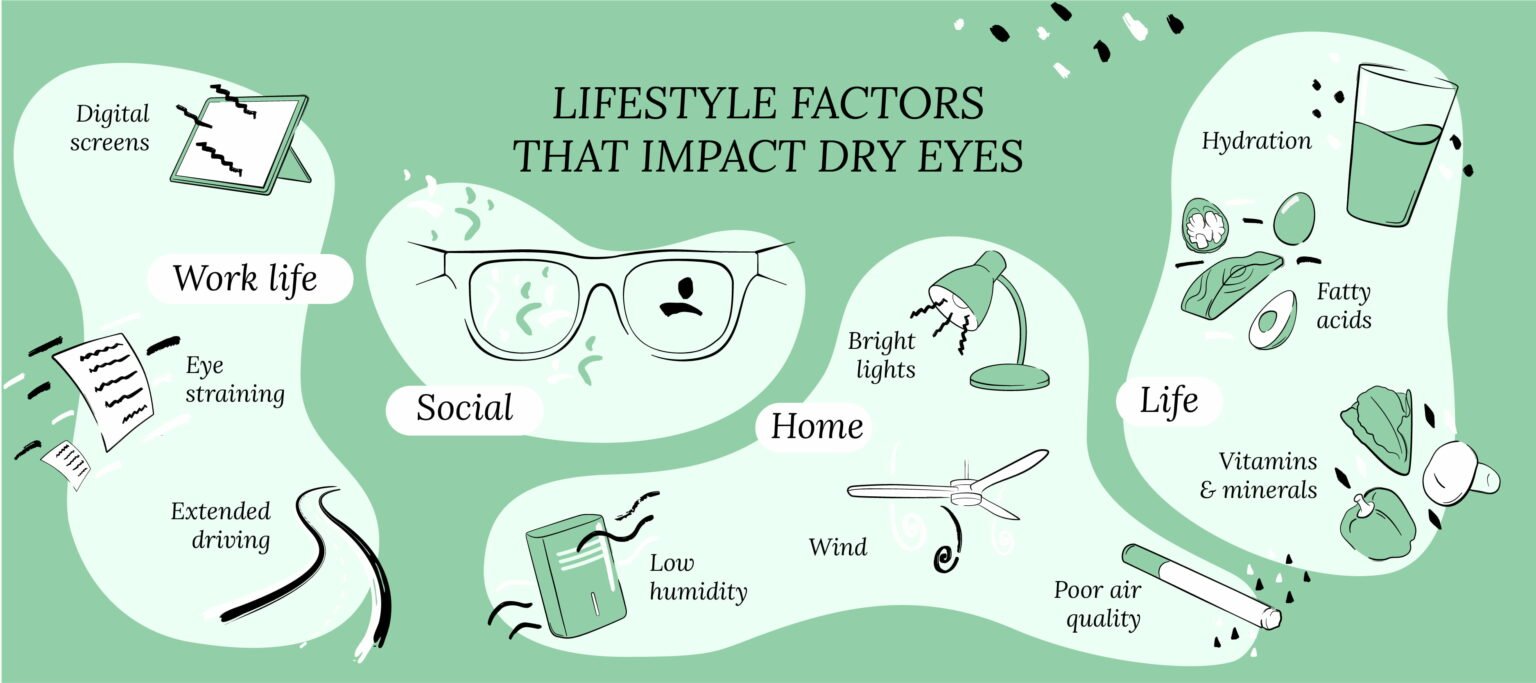Dry eye disease (DED) is also known as dry eye syndrome, keratoconjunctivitis sicca and ocular surface disease. Lifestyle has a significant impact on DED.1 When we say lifestyle, we mean everything you do, how you live, and your environment. Lifestyle impacts all aspects of your life, including your eye health.2
Lifestyle is seldom considered with DED, but it’s one of the easiest ways to improve your dry eye treatment and increase your overall quality of life. Having a discussion about lifestyle with your eye doctor (ophthalmologist or optometrist) is an important part of treating of dry eyes.
Key points
- Lifestyle has a large impact on dry eye disease.
- Digital screens, low humidity, air pollution, air allergens, intense sunlight and smoking can all worsen dry eye disease.
- Small lifestyle changes can make a big difference to improve your dry eye symptoms.
Mindfulness and Dry Eye Disease
You may be wondering why we’re talking about mindfulness in the lifestyle section?3 Well, it’s difficult to critically look at one’s lifestyle and identify DED risk factors. It requires paying attention to yourself and your surroundings, which is easier said than done. Many of us are used to a routine, and a routine by its very nature is difficult to perceive when we’ve done the same thing so many times over. It’s similar to driving or walking in your neighborhood, where you get around without thinking about it.
So the first step in learning how your lifestyle impacts your DED is to pay attention to your lifestyle. Start by being mindful of yourself and your behavior and your environment.
Impact of Work Life on Dry Eye Disease
Most jobs these days require hours of work on computers and smart devices. When you stare at a computer screen, or any smart device, your blinking decreases significantly.4 Blinking helps replenish the tear film, which is essential for making your eyes feel comfortable, for protecting the corneal surface, and for giving you clear vision. So, when your blinking decreases, you develop dry eyes. You may often experience eye strain, blurred vision, burning, dryness and the need to squeeze your eyes tightly.
Doing tedious work on a computer, like writing, working on an excel sheet, or doing accounting can be very challenging. If your work involves driving or other focused tasks like manufacturing or handiwork, you may also experience dry eyes. This is because when you focus, you may naturally blink less. With driving, not only are you focused on the road, but you may also have the car vents blowing air into your eyes, causing tear evaporation.
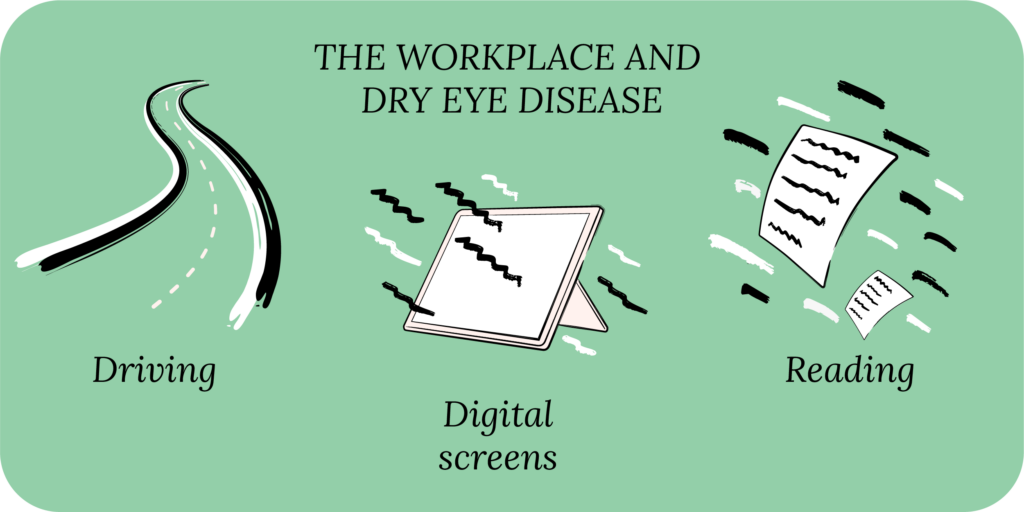
Of course, the impact of your work life on your eyes has only gotten worse during COVID-19. This is because so much of our work now is remote, and requires long hours of video calls. With office workers spending most of the workday on a computer, the prevalence of DED during the pandemic has likely increased.5
Social Life and Dry Eye Disease
Humans are social beings, and spending quality time with family and friends, or enjoying hobbies and interests, is a necessity. Watching TV or online streaming is a major source of entertainment. Just like with working on a computer screen, watching TV has the same effect: blinking less leads to symptoms of dry eyes.6 The same thing happens when you are watching a movie in a movie theater.

Doing household chores, such as cooking, paying bills, and yard work can exacerbate dry eye symptoms. These tasks require focus and may expose your eyes to irritants or allergens in the air.
Even your hobbies and activities may affect dry eye disease. Outdoor activities, such as running, gardening, walking, or golf, expose you to changes in humidity, UV light exposure, and air quality that may worsen dry eye symptoms. Reading, writing, or painting require focus and you may blink less, leading to an inadequate tear film and causing dry eye symptoms.
Going to social events, such as concerts, bars and restaurants, can expose your eyes to irritants. If you wear contact lenses and certain types of makeup when you go out, you increase your risk of dry eye symptoms.
During COVID-19, many of us had to wear masks in social settings. Masks can lead to mask-associated DED, due to air directed from the mask toward the surface of the eye. It’s similar to sleeping under a fan or having your car vent blowing in your face.
Tobacco smoking and e-cigarettes can harm your body, and cause several eye problems, including chronic dry eyes. The smoke irritates your eyes, which may cause rapid tear evaporation (tears dry up too fast) or decreased tear production (not making enough tears). This can cause inflammation on the surface of the cornea and conjunctiva.

Impact of Nutrition on Dry Eye Disease
The importance of your diet cannot be overstated.7 Nutrition is the foundation of eye, physical and mental health, and plays an important role in eye care, and in managing several eye conditions. But many of us don’t actually consume a balanced diet with protein, carbs, essential fatty acids, vitamins and minerals. It can be difficult, but if you have DED, paying attention to your nutrition is key.
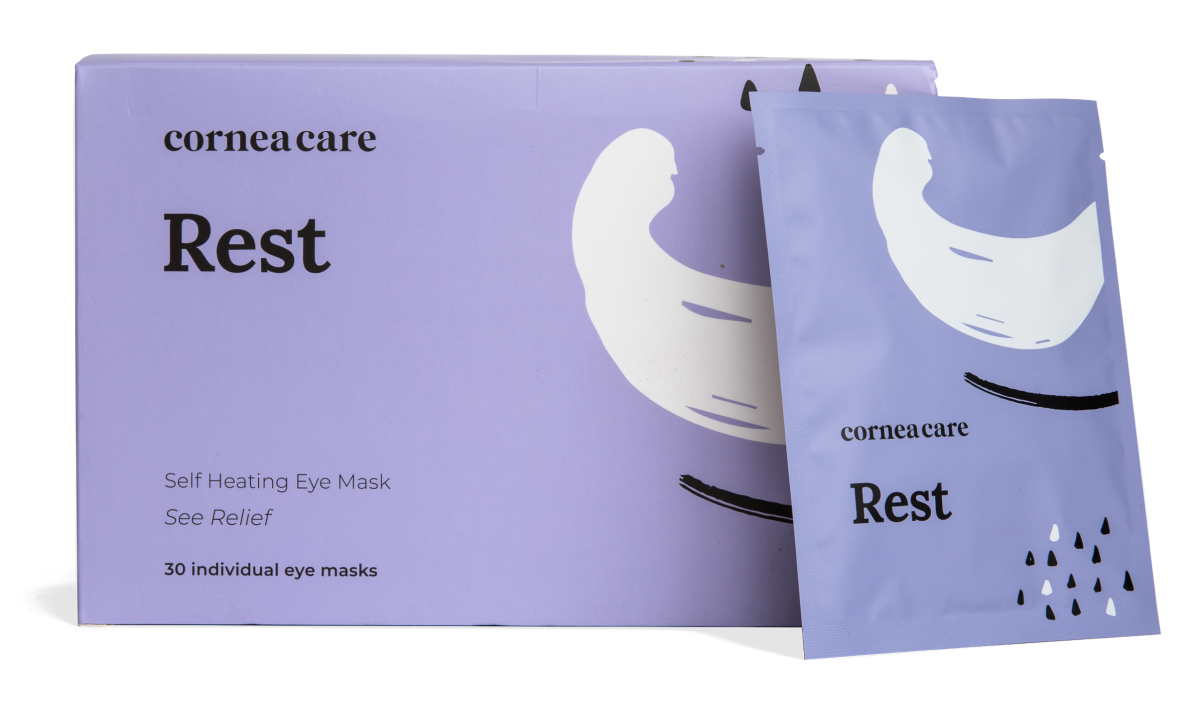
Rest
Warm Compresses
Perfect for eye dryness, fatigue, tearing, and puffiness of the eyelids. Free shipping 📦.
Try today - $30
Not drinking enough water may cause dry eye symptoms. One sign of DED is tears with high osmolarity, which basically means your tears do not have enough aqueous (water). In other words, not drinking enough water leads to dehydration for the body and for your tears.
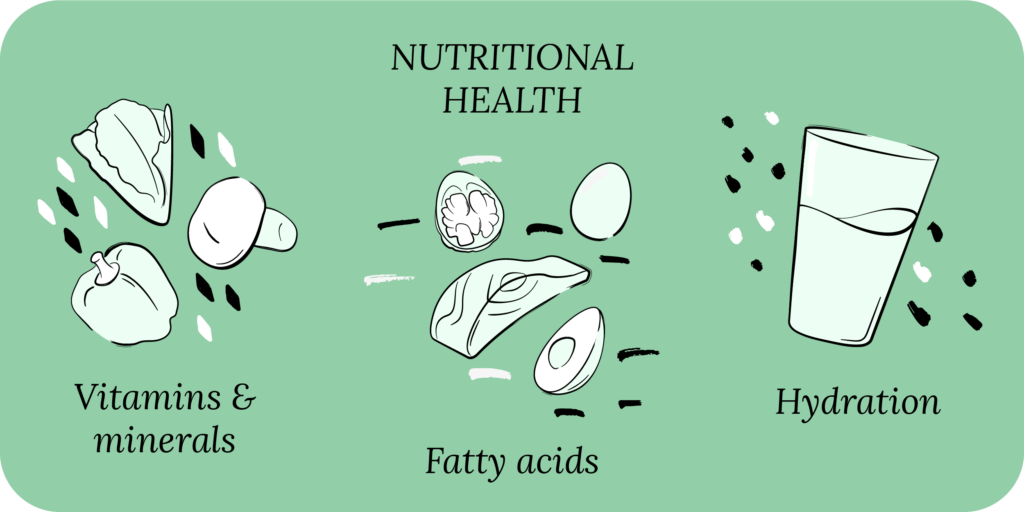
Essential fatty acids, specifically omega-3 fatty acids, may be beneficial for DED. However, the average diet consists mostly of omega-6 fatty acids (found in vegetable oil), with few amounts of omega-3s. In fact, most people consume 15 times more omega-6s compared to omega-3s.
While omega-6s are helpful in many ways, when you consume a disproportionate amount compared to omega-3s, it can cause inflammation.
Other essential nutrients for DED include vitamins A, B6, B12, C, D and E, coenzyme Q10, zinc, copper, selenium, lactoferrin and curcumin.
You can find these nutrients in:
- Fish and meat
- Whole grains and fortified cereals
- Seeds and legumes
- Fruits and leafy vegetables
Environmental Impact on Dry Eye Disease
The environment has a significant impact on DED.8 The key risk factors are high winds, low humidity, extreme temperatures, high UV index (intense sunlight), allergens, and pollution.9
High winds can cause rapid tear evaporation, which you may encounter outdoors or inside your home (fan or air conditioner) or car (vents). Low humidity can lead to an unstable tear film.
Airborne allergens such as pollen and air pollution can irritate your eyes, leading to inflammation. Even the treatment for seasonal allergies (antihistamines) can worsen DED symptoms. Finally, extreme temperatures and intense sunlight can worsen dry eye symptoms.
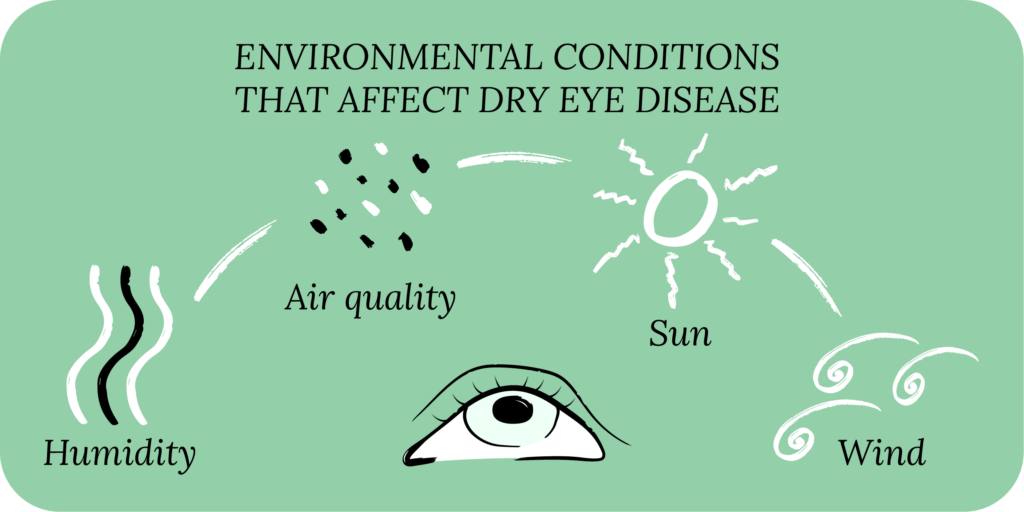
Physical and Mental Health Linked to Dry Eye Disease
Your overall physical and mental health are important in your lifestyle, and in your eye care.10 Several eye conditions can impact dry eye disease. For example, many eye drops contain benzalkonium chloride (BAK), a preservative that can be toxic to the ocular surface.
You may use eye drops for glaucoma, or for eye surgery. It’s important to discuss the impact of drops with your eye doctor, and explore alternative treatment options if needed.
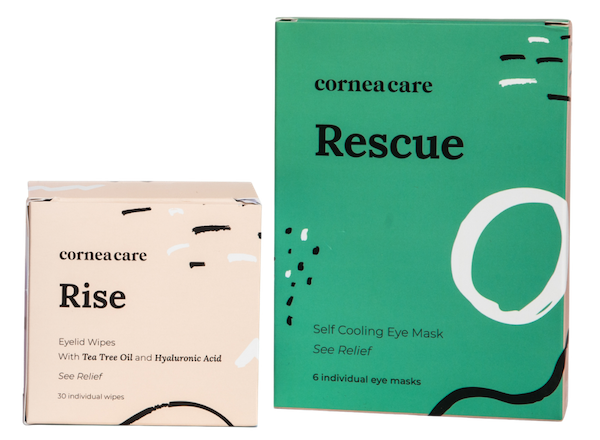
Starter
Eyelid Hygiene Plan 1
Perfect for eye dryness, burning, itching, pain, crusting/flaking of eyelashes and inflamed eyelids. Free shipping 📦.
Try today - $35
Autoimmune conditions, such as Sjögren’s syndrome, rheumatoid arthritis and lupus, are important risk factors for DED. Rosacea can cause meibomian gland dysfunction and blepharitis, leading to evaporative DED.
Symptoms of dry eye are a side effect of several oral medications, like antihistamines, antidepressants, birth control pills, diuretics, decongestants, beta blockers, chemotherapy, and hormone replacement therapy. These are all important considerations in making lifestyle changes for your overall health and eye health.
Putting It All Together
At CorneaCare believe that dry eye disease should not get in the way of you living your life! You should not have to fear the impact of your lifestyle on your DED. You don’t want to worry about your DED every time you wanted to go outdoors, read a book, or watch TV.
If your lifestyle puts you at risk for dry eye symptoms, then a good treatment plan is a must. This includes having a daily regimen with a combination of preservative-free artificial tears, eyelid hygiene, and good nutrition. It also entails making small lifestyle interventions, such as using a humidifier, dimming your computer screen, and taking regular screen breaks.
Making these small, important changes and sticking to them will let you get ahead of your DED, so that you can live your life how you want to!
What’s Next
Finally, let’s learn how to treat dry eye disease!



